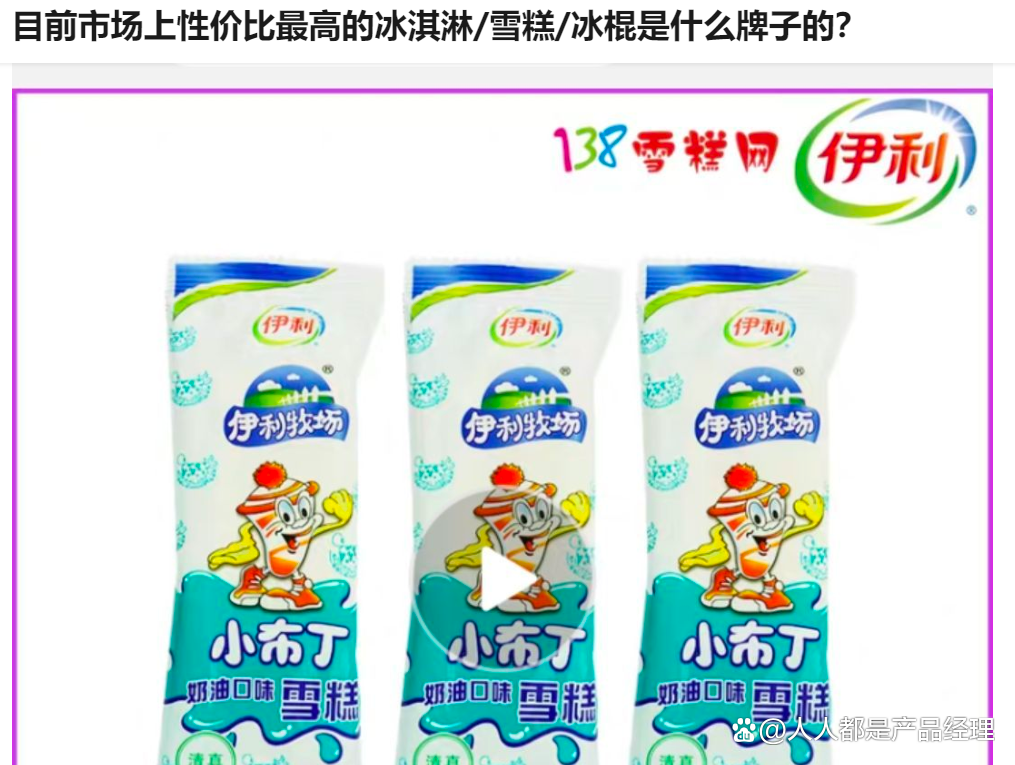In the era of consumption downgrade, has the role of brands declined?
Author:Everyone is a product manager Time:2022.09.22
In the era of consumption downgrade, everyone began to consume low desire and began to consciously resist consumerism. It can be spent without spending on shopping, and spending less can be spent. In the era of consumption downgrade, is it meaningful to build and continuously shape the brand? Let's find the answer with the article!

As a concept of consumption downgrade, it was probably proposed and discussed in large quantities around 2017. The annual hot word that year was "funeral". I thought that the trend of consumption downgrade was only a moment, but I did not expect it to start.
At the beginning of 2018, a popular topic of a per capita salary of millions of per capita salary is: What excellent consumption downgrade options are there in 2018? At the beginning of the same year, I wrote the article "2018, Consumption Dowager", which systematically invested the trend and choice of consumption downgrade, and was reposted by many large numbers.
In 2019, a paragraph burst into fire after being reposted by Wang Xing: 2019 is the worst year in the past ten years, but it is the best year in the next decade.
Unexpectedly, this sentence became a word, and the new crown epidemic in the second year came. To this day, the world still has no trouble to get rid of the epidemic.
The downgrade of consumption in 2017 thought it was the pinnacle, but it did not expect that it just started. It seemed to have stable existence to become one of the consumption trends. Some time ago, some media wrote that "young people have already consumed rotten, and the brand wants to engage in consumption upgrade." Under the trend of consumption downgrade, the upgrade of new consumer brands is not accepted by the market.
In the era of consumption downgrade, everyone began to consume low desire and began to consciously resist consumerism. It can be spent without spending on shopping, and spending less can be spent. In the era of consumption downgrade, is it meaningful to build and continuously shape the brand?
To clarify this problem, start with the characteristics of consumption downgrade.
1. The characteristics of the era of consumption downgrade
Consumption downgrade is not just appearing in China. As a master of China, consumption downgrade has been in Japan for many years, but this phenomenon in Japan is called a "low desire society." According to the book "Fourth Consumption Age", the trend of low desire society or consumption downgrade starts from 2005. The consumption characteristics of this era are as follows:
From privacy to sharing consciousness. Japan itself has the trend of "disconnection", that is, abandoning unnecessary things and putting down the possession of things. Sharing can save expenses. From the pursuit of brand names to simple and leisure. The Japanese began to "show off consumption", and the hot sales without LOGO's basic clothes became a manifestation of this. Local consumer culture prevails. In this era, Japan began to transform from the worship of European and American lifestyles to the exploration of Japanese local consciousness. The attention of local, local, local, and people's Japanese culture has continued to expand. Consumption to learn. "When consumers realize that whether it is a senior brand or something, they can no longer achieve their own uniqueness, they think they can only change themselves." Learning tendency is an important manifestation. When I went to Japan for the first time five years ago, I noticed a phenomenon. The Japanese who were walking on the street seemed to be very enthusiastic about wearing black and white. Like to pursue simple wear.
The characteristics of consumption downgrade in Japan are currently fully reflected in some people in China, such as:
In recent years, the trend of "disconnecting leave" and "minimalism" in China is very popular. The industrial decoration style, and even the "Syrian decoration wind" has attracted much attention. At the same time, the traffic such as leisure fish has skyrocketed, reflecting the characteristics of shared items.
In terms of wearing, fast fashion brands like Uniqlo and MUJI have become many people's frequent purchases.
The rise of the national tide brand has made big big -name products abroad no longer as much as before.
The rise of the knowledge payment industry reflects the current pursuit of learning.
Second, the brand characteristics of the era of consumption downgrade
The most direct manifestation of consumption downgrade in life is people's understanding of brand, consumption changes, and changes in the brand under this trend.
1. The cost -effective brand returns to consumers' sight
In the stage of consumption upgrade, almost every brand is considering how to upgrade. It is the ultimate goal of the brand's pursuit through product research and development, packaging, marketing and other means. The first step of brand upgrade.
At this stage, although cost -effective brands also have huge markets, buying cost -effective products has become synonymous with low -end consumers. Although the earliest Internet mobile phone brand Xiaomi was sold due to high cost performance as soon as the market was launched, it has never got rid of the trouble of "low -end". Essence
However, the market trend is rapidly changing. After the relegation trend of consumption has arrived, consumers tend to be rational. They are unwilling to pay for gimmicks such as packaging and marketing. Instead, they carefully consider the cost -effectiveness of a product.
The essence of cost -effectiveness at this stage is to consider the quality of goods. If the quality is good and not expensive, it will definitely be loved by consumers. For example, the competition of brands such as Honor, Xiaomi, and IQOO is fierce. This market is competing. If a product is good but the price is more expensive, it can win the market. For example, if you buy a new iPhone for four or five years, it is also a cost -effective brand.
In general, more and more consumers do not pay for marketing, but pay for quality. This year, the word "ice cream assassin" appeared on the hot search, which made many consumers realize the importance of returning to cost -effectiveness. The following high praise answer is a clear manifestation. 2. Consumption Return to manufacturer brand

Adam Smith's theory of labor division of labor is one of the theoretical foundations of capitalist industry. For brands, because of division of labor, they can entrust production to many subcontracting companies. Although the production process may be very different, once they belong to the same brand, these consumer goods will be unified.
Today, the manufacturer is a manufacturer and a brand. When paying for the brand, no one cares about who the manufacturer is.
But before industrial society, manufacturers were brands, and consumers bought goods to buy manufacturers' products. For example, the Weichwood Wood Ceramics Factory founded by Weichwood in 1759 is a porcelain manufacturing company and a brand. Later, this brand became one of the world's most well -known ceramic brands, and it was not announced to bankruptcy until 2009.
In the era of consumption downgrade, consumers began to return to the trend of buying manufacturer brands. Many people began to consume in Alibaba instead of Tmall. For example, I now buy daily necessities such as sheets and mobile phone cases in Alibaba (not advertising).
Netease's ODM model before the transformation is the supplier commodity platform. This model is actually the manufacturing process of well -known brand manufacturers, but it does not use brands for sales, such as slippers produced by MUJI manufacturers, new and beautiful, beautiful and beautiful The luggage produced by the manufacturer, the shoes of the CK manufacturer, etc. It takes at least thousands of coats to buy a coach, and only a few hundred yuan to buy a coach manufacturer on the Netease strict selection. This is the performance of de -branding.
The advantage of buying manufacturer products is that you can buy products with the same quality as well -known brands at a lower price, which shows that consumers are increasingly unwilling to pay for "brand tax".
3. The value of the brand is weakened, and there is no LOGO brand popular
From the perspective of consumption psychological gain, Anthony Galuzo, the author of "Manufacturing Consumers", said, "It seems that people choose products and products to bring people pleasure to people, but in fact all this obeys a collective social logic People are not really spending because of their internal needs. They are led by their noses. In order to maintain their status and keep his class, he must comply with the law of this consumption. "
Among them, there is vanity and jealousy. The core of consumerism is to use the psychology of people. I must use better things than my own neighbors and friends.
In the era of consumption downgrade, human desires gradually decrease, so vanity and jealousy will gradually decrease. In this case, consumers' consumption tends to be rational, and will not blindly chase brands and trends. Instead, trying to resist this intangible social pressure One embodiment is to completely hide the brand and choose No Logo.
In recent years, MUJI is undoubtedly popular in China. People wearing MUJI cannot see any logo on their clothing. This is very different from GAP, which is also a fast fashion brand. Although LOGO is low -key, the style revealed by MUJI products is always simple and textured. I personally prefer the clothes of MUJI, because it is in line with the consumption tendency that I do not tossed on my clothes.
MUJI's design consultant Haraki Shirai used a sentence when explaining the concept of MUJI products, "It's not that, but that's it." "This is good". The brand concept does not need LOGO to display identity, but rational consumption.
4. The spiritual supply of the brand is more important

In the era of consumption downgrade, consumers have no great interest in the material attributes of goods. Almost every category in the market has countless choices. There is no essential difference between choice A and selection B. At this time The spiritual value of goods can bring. For brands, the differentiation of goods is mainly to differentiate the spirit of the product.
Therefore, more and more brands have begun to emphasize the brand spirit. Coca -Cola is exploring the significance of happiness, Nike is explaining the significance of hard work, and Apple is interpreting the value of imagination. Although the people who consume these brands have not been particularly differentiated, they think that they agree with the spirit of the brand, the brand spirit represents its own values, and is willing to be with these brands.
3. In the era of consumption downgrade, the role of the brand still exists
In the era of consumption downgrade, the role of the brand is different from the era of upgrade. Consumers will not blindly pay for the brand, but they will consume more rationally, but this does not mean that the brand has no effect.
1. Brand trust is still the foundation
A huge value of the brand is to build trust, which can reduce the decision -making cost of consumer consumption. With the brand, consumers do not need to spend the effort to identify which products are good and which products are poor. The brand can.
Recently, I read a book called "Forty -thousand Customers", which contains a story of a horse's palm sold in China.
During the Republic of China, Germany tried to export some goods with little value in their own country to make profits in China. They exported some horses who were useless in their own country to China. Half, you can become an ideal Chinese razor manufacturing material -Chinese razor.
"Soon, the palms from New York, Liverpool, Paris, and other places were transported to China. The polishing on the cobblestone streets can form the best size and fire of making razors. Such conditions cannot be copied in other cities. Therefore, Hamburg becomes an old horse palm distribution center in the world. There is definitely no sales. As a result, the palms of the world's horses all over the world must be assembled in Hamburg first. "Here the Hamburg horse palm is the brand, which represents a trust and reduces the Chinese people's decision -making costs. It can be seen that the brand is extremely important during the Republic of China with low consumption.
Therefore, even in the era of consumption downgrade, the most basic attribute of the brand- "trust" is still indispensable.
2. The symbol of the brand still exists
Three major values of goods: use value, exchange value and symbolic value. The first two are the physical attributes of the product, and the latter is the spiritual value of the product.
The brand represents a symbol, a symbol that completely distinguishes you from others, as Baltricia said: "The difference in consumption is not the difference in product use value, but the difference between product symbols ... people have never been always The product itself (use value) does not consume, and always uses the product (from a broad perspective) as a symbol that can highlight your symbols, or use it to join the ideal group, or as a higher status group to get rid of the status to get rid of the status Lower group. "
In the era of consumption downgrade, the value of brand symbols does not necessarily exist to distinguish "advanced and low -level", but more to distinguish their unique tastes and their favorite circles. Like a brand and like a symbol. It proves that they are a certain type of person. Even those who consume MUJI, they also want to be the kind of person who does not care about material attributes.
3. Brand cost performance is greater than white brand cost performance
The price / performance ratio is a good choice for the era of consumption downgrade, but consumers considering that cost -effectiveness is not to buy blind low -cost products, but to buy trusted cost -effective products. From this perspective, the cost -effective product launched by the brand is better than the cost -effective product of the white brand.
For example, in the era when smartphones were generally at the lowest price of 2000, Xiaomi launched the Redmi brand to hit the price of a thousand yuan machine. With the card of the brand, under the blow of Redmi, the market of the cottage machine has gradually shrinking, and finally withdraw from the historical stage.
4. LOGO is also a logo, and the manufacturer brand is also a brand
The trend of consumption downgrade is easy to give people a misunderstanding, that is, since consumers do not care about the brand's physical attributes, consumers have begun to buy manufacturer products and logo without logo, so the brand does not need it.
In fact, such non -branded products also need good quality to form a good reputation, so as to form a repurchase. In the long run, this kind of non -branded products can also form their own brands and form a potential energy that is not weaker than well -known brands.
Although the manufacturer brand consumption is a trend, the former's B2B business is a brand in itself for the purchase of its products and services. Factory brands, because of Foxconn's brand effect, Apple will not find unknown sector foundries. In the 2C market, manufacturer brands usually emphasize that they are foundries of the XX brand. Without it, it is still to solve the problem of trust.
Although MUJI does not have a logo, it is a brand itself.
5. Spiritual consumption is the brand's spiritual consumption
The above says that in the era of consumer downgrade, it will value the brand's spiritual attributes more. It is obvious that it is easy to see the spiritual attributes of the brand, not the spiritual attributes of the white brand. Because the white card is not a 2C continuous business, it will not establish the brand spirit at all. Consumers consume white cards just to save money on some daily consumer goods, not to pursue the spirit of these white cards.
On the contrary, the long -term brand must attach importance to the construction of the brand spirit. This is an upgrade based on brand trust, and it is also a must -have road for the brand to build a long -lasting influence.
Today, when brand advertising is doing public communication, enjoyment and success are still the two most important points, but many brands have begun to try to guide consumers to pursue spiritual pursuit. This change also reflects the consumer society to some extent. Transformation.
Fourth, conclusion: In the era of consumption downgrade, the role of the brand is still huge
In the era of consumption downgrade, consumers have begun to live low desire. It seems that the role of the brand is not great, but the conclusions given in this article are the opposite. In the era of consumption downgrade, the role of the brand is still huge. Only brands can do it.
Regardless of whether the trend of consumer downgrading is for a long time or it takes a long time, the role of the brand still exists, creating an excellent brand, bringing quality and spiritual gains to consumers. The way of living.
【Reference Information】
Anthony Galuzo "Consumer" Carl Crowe "40 million Customers" Baltricia "Consumer Society" CCTV "Company's Power" column writer
Author: Xunkong, WeChat public account: xunkong2005, commercial observer, social marketing explorer.The original published in this article is a product manager, and reprinting is prohibited without permission.
The question map is from UNSPLASH, based on the CC0 protocol.
The point of view of this article only represents the author himself, and everyone is the product manager platform that only provides information storage space services.
- END -
Guangrong Village, Helan County: Help farmers increase income and increasing small celery "acting" and "big characters"

One tadpole of cinema, ten miles of floating vegetables, walked into the planting ...
Summary: In the first half of the year, the US stock market's bleak economy and performance were negative or the market continued to undergo pressure.
As the high inflation prompted the Fed to gradually tighten the monetary policy, the US stock market performed bleak in the first half of this year. The Nasdaq Composite Index and the 500 stock indexe